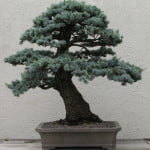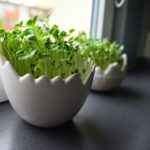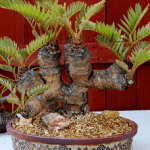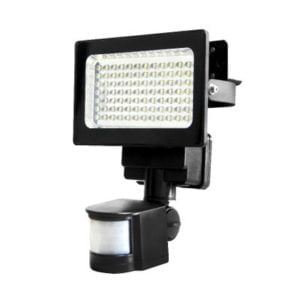Most plants used for indoor bonsai are tropical. They thrive in indoor environments as long as they receive special attention to their light, water, soil, temperature and humidity needs.
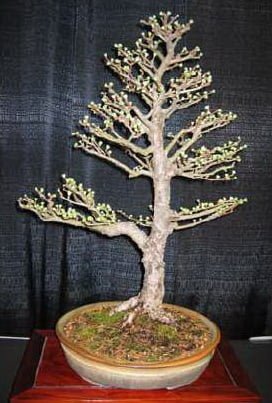
Light:
Indoor bonsai must be grown in the bright light of an unobstructed east, south or diffused west window. During the summer, indoor bonsai may be taken outside, first to a shaded area and then gradually moved to an east facing exposure or protected and diffused western exposure. At the end of the warm summer season, gradually return your bonsai indoors before nighttime temperatures approac
Water:
With their roots growing in shallow containers, bonsai require more frequent watering than other houseplants, needing to be checked daily.
During the warmer and brighter summer season, bonsai must be checked daily. When the soil surface is dry to the touch, it is time to water.
If your bonsai has a top dressing of pebbles, be sure to check the soil surface itself. Water by submerging the bonsai pot in tepid water.
When air bubbles subside, the soil is saturated. At that time, remove it from the water and allow it to drain completely before returning to its window location. To prevent root rot, discard all water that accumulates in the bonsai saucer.
Temperature and Humidity:
Plants suitable for indoor bonsai will grow in average room temperatures as long as they have sufficient humidity. Daytime temperatures between 15 and 20?C are ideal.
Nighttime temperatures should be a minimum of 10?C. If you place your indoor bonsai out-of-doors during the summer season, be sure to bring it back inside before nighttime temperatures drop below 10?C.
Since most indoor bonsai are tropical plants, it is important to recreate the humid conditions of their native tropical environment. Mist-spray the foliage generously and often with clean, tepid water. To further increase the humidity on a constant basis, set the bonsai on a pebble tray.
A pebble tray is an over-sized saucer full of small pebbles to which water is added. The water level is kept below the bottom of the bonsai’s container. The water will evaporate from the surface of the pebbles, adding moisture to the air around the bonsai plant.
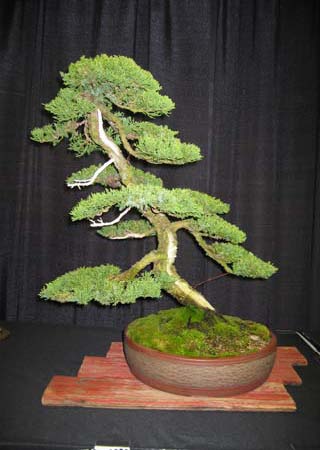
Fertilizer:
It is best to use a liquid fertilizer for bonsai during the growing season (March through October). Do not fertilize your indoor bonsai during the winter season (November through February).
Re-potting and Root Pruning:
Bonsai plants need to be repotted every two years. The best season to repot is spring just before new growth resumes. Re-potting is also the time to root prune your bonsai.
Root pruning consists of removing up to 1/3rd of the plant’s roots, concentrating on removal of the heavier tap roots. This is done whenever it will be repotted into its existing container size.
If you wish to limit the size of your bonsai to its present size, then repot it into its same container. As your plant ages, it will eventually need to be placed into a larger pot. When selecting a new bonsai pot, choose one that is the same shape and only one size larger than the present container.
After root pruning, place a screen over the extra- large drain holes of the bonsai pot. Then add 15mm of commercial bonsai soil mix to the bottom and sides of the pot.
Moisten the soil mix and the plant’s root ball before re-potting. Gently insert the plant’s root ball into the container. Fill in any gaps with soil mix and add soil to within 10mm of the top of the container.
Firm the top of the soil lightly before gently re- moistening the entire container. Add a layer of pebbles or crushed gravel on top of the soil to prevent soil loss when submerging.
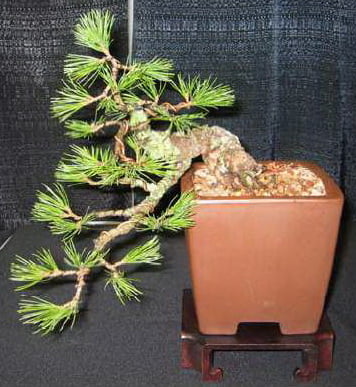
Training and Pruning:
While many indoor bonsai may be successfully trained by pruning alone, often wire is wrapped around stems to train the plant into the desired shape.
Indoor bonsai demand frequent and precise pruning. Pruning for shape should be done in early spring before the season’s growth begins. Throughout the growing season, shoots need to be pruned when they have developed at least six leaf sets. Prune just above a leaf node.
Pests:
The most effective prevention for pests and diseases is to properly water your indoor bonsai and regularly clean the plant.
Wash the foliage with clean, tepid water at every watering. After pruning, make certain that the soil around the base of the trunk is free of leaves and other plant debris.
Debris left on the soil surface can decompose, creating ideal conditions for fungal disease and moss that may contribute to root rot.
Moss on the soil surface may be decorative, yet it is a perfect refuge for pests and their larvae. If you like the appearance of moss, be sure to keep it well away from the bonsai’s trunk and branches.
A soft bristled toothbrush works well to remove unwanted moss from the trunk of the plant.

[wd_hustle id=’share’ type=’social_sharing’]


